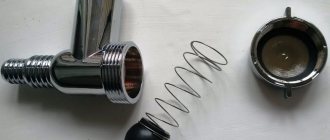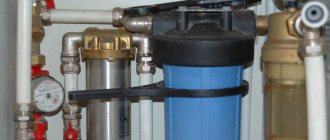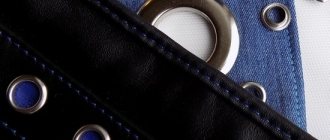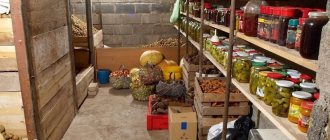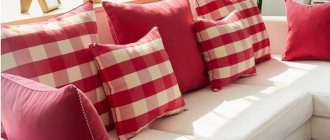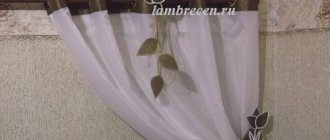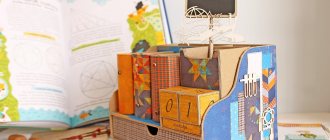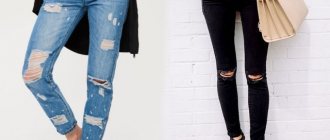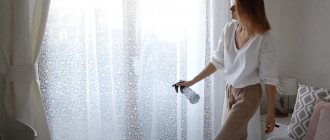From this article you will learn:
- What eyelets for awnings look like
- What types of eyelets for awnings are there?
- How to install eyelets on an awning with your own hands
- What other fastenings exist, besides grommets for awnings?
The concept of “eyelet” came to us from the time when the sail appeared. At that time, grommet was the name given to the technology of strengthening the edges of the holes in the sail, intended for attaching the canvas to the rigging. Currently, this term refers to both a method of strengthening holes for ropes and cables in thin materials, as well as parts of rings used to implement this technology. Eyelets are used in equipment, shoes, and clothing. They are used for awnings, advertising banners, tents. In this article we will talk about eyelets for awnings, as well as installing eyelets on an awning.
Where are they used?
There are several areas of activity in which eyelets are often used.
Outerwear production
Most often, such elements are used to create outerwear. In clothing production, such eyelets are used to decorate products and give them a unique look. Such details can often be seen on modern models:
- raincoats;
- sheepskin coat;
- windbreaker;
- jackets;
- winter coats
Shoe making
Many manufacturers use eyelets when creating shoes. In this case, only high-quality and durable components made of durable steel metal are used. Their surface is coated with nickel or copper. This protective coating protects the metal from the formation and spread of corrosion.
Release of home furnishings products
Often lumpen people can be seen on home furnishing products, which are found in almost every home. These elements are found on some types of curtains or curtains. They are also added when making lambrequins or curtains. In this case, simple steel parts are used that do not have a protective coating.
Tourist and holiday destinations
Such components are often used to create country or tourism products. For example, they are used during the production of textile canopies. Grommets are also found in most modern tents used in the tourism industry. In the manufacture of canopies and tents, high-strength steel parts are used.
In commercial activities
Eyelets are considered common parts that are used in commercial activities. Many manufacturers make them and then sell them separately. Most often they are purchased to be used to replace broken elements.
Manufacturing of shipping products
Few people know, but eyelets are often used in the creation of shipping products. Most often, such rings are used to create sails for ships. In this case, large and large parts are used that would withstand the load from strong gusts of wind.
In office and printing
Another area of activity in which eyelets are regularly used is printing and office work. Metal products are used to create calendars, notebooks, and books. They are sometimes found in decorative gift wrappers.
Installation instructions yourself
Having all the necessary materials and tools at hand, anyone can independently make an awning or canopy with eyelets at home, which can be used on the farm. This product can be used in various areas, from a tarpaulin curtain at the entrance to a garage to covering an outdoor pool from foreign objects and dirt.
Eyelets are great for securing canvas curtains to gates
What other fastenings exist, besides grommets for awnings?
The performance characteristics of automobile and construction awnings, household tents, banners, etc. depend not only on the properties of the fabric from which the product is made, but also on the quality of the fittings used, among the wide variety of which we highlight the following elements:
Rivets for awnings
Blind rivets are widely used both in the manufacture of household awnings and canopies, and in elements of clothing and footwear. The choice of material for these fixtures depends on the material of the parts being fastened and the environment in which the fastener will be used. A separate operation of painting the rivet is also allowed, so choosing fittings that match the color of the main product is not particularly difficult.
All materials from which rivets are made are regulated by GOST and can be as follows:
- Duralumin with or without coating (anodized, varnished).
- Cink Steel.
- Stainless steels (A2, A4, or imported analogues: DIN 7337).
- Copper.
- Copper-nickel alloy monel. Contains 70% nickel, 30% copper.
- Polyamide Plastic that is widely used in the textile industry.
When selecting material for fastening, you should avoid the possible occurrence of so-called galvanic couples between the fastening elements, hardware and the fastened part, as well as the fastened parts among themselves. For example, when aluminum and steel come into contact, very rapid oxidation of the former occurs and, as a consequence, its destruction. Therefore, for fastening steel parts, it is better to use rivets made of stainless steel grades A2, A4 or DIN 7337. Galvanized steel for rivets is used less frequently, since the zinc coating wears out quite quickly.
The most universal hardware is a copper (copper alloy) rivet. The main disadvantage of copper is its price, as well as the formation of a green coating (copper oxide) on the surface of the fastener over time. To be fair, it should be noted that the oxidation of copper rivets does not affect the fastening strength in any way. Polyamide does not create galvanic couples, but also cannot provide high fastener strength.
Hooks for awnings
Even such a simple element of awning accessories at first glance, like a hook for securing the awning, has its own specific technological features. The most common are galvanized devices for fastening awnings with two or more holes. The standard shape is round, oval or S-shaped, and the sizes vary greatly.
Recently, plastic hooks have become especially popular. Most of them have a flattened (flat) shape and two holes for fastening. Their price is lower than iron ones, but their service life is also much shorter.
Stationary
An analogue of a mobile one is a stationary electric press. It is equipped with tools for punching holes and making a grommet mandrel on it. A special feature of this machine is the absence of a mechanism for drawing the awning fabric, which significantly reduces the speed of its operation.
Our company Mostent has been working for a long time in the market for the production of ready-made awnings, used not only in transport, but also in the installation of various lightweight building structures on steel frames. The company's production lines are equipped with the highest quality equipment for installing eyelets - automatic mobile presses, which allows achieving the highest quality of work.
The high speed of installation has made it possible to significantly reduce the time required to complete even the most voluminous orders, which sets us apart from our competitors. At the same time, the advantages described above did not affect the increase in the cost of work, which is very convenient for our regular and potential partners.
Tips for installing grommets on a canvas awning
For awnings, linings are selected from a high-strength plasticized mixture. The surface of the parts must be nickel-plated or galvanized. In this case, installation can be carried out using professional equipment. The unit for welding two parts of the lining is best suited for these purposes. The machine guarantees fast and high-quality soldering. For installation on a tarpaulin awning, flaring and a punch are used. A separate roller is provided for each grommet option. But besides them, you can use a compact hand press. In this case, the need for impact force will disappear, and ordinary compression will suffice. In addition, the press comes complete with attachments and settings for the type and size of eyelet parts. The implementation of this installation method does not require physical strength or skills. The listed fixation methods can be used when installing street advertising banners.
How to Prepare a Tarp
First, select an awning of the required thickness and size. Next, we prepare the tools: a hammer, a punch, a marker, a pencil, a ruler - the devices necessary for punching holes. Using a ruler and pencil, we determine and immediately mark the places where we will subsequently install the eyelets. The size of the marks should be equal to the diameter of the ring. We apply everything evenly, making sure that the distances between adjacent elements correspond to the same value. After this, we take a hammer with a punch and begin to form openings in the tarpaulin according to the drawn marks. You should immediately decide on the distance from the edges, as well as the height of the placement of the overlays, so as not to cut out unnecessary holes. Before breaking through, we fold the awning in half for greater reliability of future fastening. Before creating the openings, we place a wooden board under the tarpaulin to absorb the impact of the hammer on the punch.
How to install eyelets on an awning with your own hands
To install the grommet we will need:
1. Eyelet. It consists of two parts. The first is an inner ring with a sleeve. The second is the outer ring. The material of the rings is usually brass or galvanized (nickel-plated) steel.
2. Installation tools:
hammer; a notch used to make holes in the material; flaring - a device with a conical striker, through which a ring with a sleeve is flattened; an anvil placed under the flaring upon impact; shock absorber, preferably a wooden stump, as it will be convenient to make holes in the material.
3. Material where the eyelets will be installed. They can be installed, for example, on PVC, canvas, leather, hardboard, etc.
Attention! To prevent injury, we recommend wearing protective gloves.
Installation process:
1. Prepare the edge of the canvas by folding it in half. To make the hem more neat, use double-sided tape. Under the edge, in the place where you need to install the ring, we place a piece of wooden board.
2. Make a hole in the desired place on the canvas with a punch.
3. We connect both parts of the eyelet together on both sides of the fabric. We install an anvil under the bottom of the ring, and insert a flaring tool into the hole of the block from above.
4. Using a hammer on the flaring tool, flatten the sleeve and ring.
5. We complete the rolling by hitting the sleeve with a hammer.
6. The grommet is installed.
Advantages and disadvantages of application
This is a functional device with obvious advantages. Firstly, they facilitate the process of putting on, taking off, and attaching. Eyelets also diversify and decorate the design, especially since models of different shapes have appeared. However, a round structure resists deformation best. The grommet is easy to use, so any type of work can be done quickly and without complications. This is a very useful and cheap part with a large distribution, and it is also easy to manufacture. Among the shortcomings, the first thing that appears is damage to the material that is being strengthened. A careless or sudden movement of the lace can cause the eyelet to fly out, at the same time damaging the integrity of the fabric. If we talk about use on curtains and tulles, metal parts make a lot of noise. The hinge fastening method is more convenient in this regard. A common problem is color deterioration, but this depends on the specific material.
Types and materials
The overlays come in standard round, square and various shapes. Manufacturers also produce polygon eyelets and animal figures. The variety depends on the overall design intent and purpose for a specific application. If grommets of the required shape are not found, a separate special order will be required. Based on the material used, there are metal, plastic and wooden linings. In the fashion industry, the plastic version is more often used. They are easier to attach and cheaper. Metal parts are more reliable, but make more noise. If a metal strip is threaded through the holes, it will scratch and wear out. However, for large objects like tents it is better to use metal options. Wooden overlays are useful for a certain interior, for example, simultaneously with the use of aged furniture.
Additional tips and tricks
To properly repair an awning, you need not only to follow the standard provisions of the instructions, but also to familiarize yourself with the list of additional recommendations. Among them are the following:
- As a patch, it is better to take fabric from the same material as the canvas itself. The patch should be strong with no frayed edges.
- Do not use tape on the damaged area, since this is an unreliable way to solve the problem. Only certain types of adhesive solutions are able to fix the patch.
- If you doubt your own capabilities, you can always contact a workshop where the integrity of the canvas will be restored. In addition, specialized services can repair even very large defects.
- If the fabric has come apart along the seam, then after sewing with nylon thread it is recommended to apply an additional layer of adhesive solution.
- When performing work, be sure to follow the instructions for using the adhesive composition and the basic rules for gluing the patch to the canvas. In particular, repairs cannot be carried out without first degreasing the surface, since without this the adhesion of the materials will deteriorate.
By following simple tips and recommendations, you will be able to carry out high-quality repair work and restore the condition of the canvas. If the wear is so severe that the awning tears repeatedly with minimal external influence, it is easier to replace the material.
Eyelets: history of appearance
The likely timing of the grommets' appearance remains unknown. It is known that this happened a very long time ago, perhaps during the times of Ancient Greece. Scientists do not know the language in which this word appeared, much less the inventor of this device. The appearance of the grommet is associated with the use of wind power, and the term itself refers to the hole in the sail for threading the fastening threads. In ancient times, this is how the rigging of a ship was formed. Nowadays, the term has expanded its meaning. Now this is an option for strengthening the edges of holes that are less strong than the cable passing through them.
The grommet is often used as a decorative device rather than a means to strengthen the material. Examples include linings in leather products, fiberboard, and foam board. A modern grommet is a mechanism made of a washer and a shaped sleeve. In this case, the material used is mainly metal or plastic.
Preliminary work
Preliminary preparation is important in any business to obtain a quality result. Before you think about how to make eyelets for curtains, you should:
- Make the necessary calculations.
- Buy material of the desired color for curtains and lining.
- Buy dublerin or grommet tape, eyelets. The width of the tape should be 2 centimeters larger than the outer diameter of the fastener.
- Find a flat surface to work on: you can work on the floor or use an ironing board.
Fabric yardage calculation
To calculate the required amount of fabric, you should find out the length of the cornice and determine the height of the finished product. The length of the cornice should be multiplied by a factor to give the product beautiful folds. The coefficient will be equal to:
- For light fabrics - 1.5.
- For dense materials - 2 or 2.5.
The calculation also includes material for side allowances (up to 15 cm), top and bottom allowances (at least 25 cm). The calculation looks something like this for a cornice length of 1.5 meters: 1.5 2 + 0.15 = 3.15 meters or 315 centimeters.
Counting the number of fasteners
To purchase the required number of fasteners, a preliminary calculation of materials should be carried out. To calculate the required number of eyelets, you need to measure the internal and external diameters of the fasteners, taking into account the standard properties:
- It is necessary to purchase an even number of eyelets.
- The rings should be attached at a distance of about 18 centimeters. The optimal distance for attaching them ranges from 15 to 20 centimeters. When using a double curtain rod, consider the distance between the rods so that the curtains do not touch.
- The distance between the side edge and the center of the first eyelet should be at least 7 centimeters. This parameter depends on the width of the hem and the outer diameter of the fastening. To securely fasten the fittings, you should place them so that the fasteners do not touch the seam.
Preparing fabric for cutting and finishing seams
The curtain is prepared in advance for installation of eyelets. Before installing the rings, you should:
- Decorate curtain fabric. This procedure is carried out by wetting, drying until damp, and ironing the fabric. After this treatment, the fabric does not shrink after washing.
- Sew on the lining and finish the seams.
The seams are processed in strict sequence. The top seam is treated first. The material is processed in compliance with the technology:
- The material is laid out on a flat surface.
- The wrong side is folded and ironed 2 cm.
- Another fold is made to fit the width of the grommet tape.
- Having released the width of the hem from the edges, lay the tape between the layers of fabric.
- The strip with tape is glued using an iron. Iron small sections of the tape until the sides are completely glued. Only after obtaining a high-quality result do they move on to the next section.
- The fabric is sewn along the edge of the lapel, departing 2 centimeters from the edge.
You can sew the side seams using a hem stitch. It is not necessary to use grommet tape - you can use regular curtain tape, after removing the tension cords from it. You can hem the bottom of the product after installing the eyelets at home in order to measure the desired length of the curtain to the floor. In order not to spoil the fabric due to lack of experience, you can carry out all the necessary work on a small piece of fabric.
Self-installation without special tools
In the process you will need:
- Determine the required distances on the tape for the eyelets.
- Prepare the tape.
- Install grommet parts.
To do your own fastening, it is enough to have a ruler, a hammer and some kind of stabbing device, for example, a hole punch, on hand. First, distances are calculated. There are recommendations regarding the spacing between the top edge and the center of the grommet, between the pads themselves, and also regarding the optimal diameter. In any case, the eyelet parts are placed at the same height. The next thing is to cut the ribbon, fold it with the wrong edges inward and iron it. The braid must cool before attaching to the base material. Unnecessary fragments are also removed. In the future you will need glue and an iron. Installation of the eyelets themselves begins with marking. Moreover, it is advisable to first practice on some material. Next comes the precise and meticulous process of fixing the lining in the hole. To normalize the fastening you will need a hammer.
Calculation of the distance between eyelets
Self-calculation is usually needed at home to determine the installation location on the curtains. A miscalculation will cost damaged property. First you need to determine the possible number of holes. In any case, we are talking about an even number so that the edges of the curtain look in one direction. Then, when hanging, you will need to choose the direction towards the window. The same distance is left between each eyelet - for curtains it can be 17 cm. We are talking about the distance between the centers of the holes. The minimum is 15 and the maximum is 22 cm. The minimum allowable interval to the edge of the curtain is between 5 and 7 centimeters. If you ignore this rule, there is a high probability that the overlay will not fasten. The processing should include 12 cm at the top, 5 cm for the hem at the bottom and 2 cm at the sides, as well as the internal and external diameters of the holes at 35 and 55 mm.
As a result, you need to calculate:
- Eyelet diameter.
- Spacing between eyelets.
- The distance from the outer overlays to the edge of the fabric.
Using grommet tape
Reinforcing tapes come in one- and two-layer types. They differ in the number of pasted sides. To select the ideal width, add at least 2 cm to the outer diameter. In this case, transparent tapes are chosen for thin curtains. The braid should be ironed at a minimum heating temperature. Next, we glue it in short sections with a delay of 8-12 seconds each. Tight adhesion of the grommet tape to the fabric is ensured by light pressing. There is no need to touch the material during the fastening process, otherwise the braid will lie askew. Theoretically, the sealing tape can be secured with small needles. When it comes to washing curtains with grommets, you should choose the delicate cycle at a water temperature of about 20 °C. It is not recommended to turn on the spin cycle, as it will have a bad effect on the tape. If the pads are made of plastic, you will have to refrain from using chemical cleaners.
Installation technique
First, we mark the places on the paper or on the fabric itself. Before punching holes, make sure that the holes of the pads and the hole punch meet. In any case, the diameter of the latter should be inferior to the eyelets so that they do not fall out later. Small holes, in turn, are made with an awl or a stationery knife. In any case, we treat the area under the holes with an adhesive composition even before punching. When the hole is ready, carefully insert the grommet into it, with the cap on the front side. To prevent damage, place a metal ruler or sheet of iron on the substrate. Next, we place paper with a grommet on the backing, so that the legs look up. Then we insert a flattening tool into the leg with pre-opened or cut edges. At the end, we hit the tool with a hammer, which is inserted into the leg - the grommet is secured.
Types of grommet rings
The materials from which this type of fastening is made are varied - from metal to plastic of various shapes and colors.
Installation methods also directly depend on this. A plastic eyelet is much easier to install, but a large load on it is unacceptable! If desired, you can remove it and use it again, but the fixation of the edges of the fabric will be very poor - they crumble and become deformed, and the product looks sloppy.
Colored metal eyelets are much more reliable than plastic ones - they hold the fabric perfectly, preventing it from tearing.
Steel fasteners are considered the most reliable for fastening fabrics, leather parts, and cardboard. But before you install eyelets without tools on clothes or shoes, you will need to practice on unnecessary pieces of material. This is necessary to understand how the work is going and not to spoil the thing.
The most popular way to use eyelets is to attach them to curtains. To do this, you additionally need grommet tape, which is sold in specialized stores. It is used to glue the edge of the fabric, creating rigidity.
The mount itself can have a completely different shape - from circles to animals. The color palette is also huge.
Curtain eyelets will help to form smooth, interesting and neat folds. In order to move such a curtain on the eaves, you do not need to apply any force. The fabric does not wear out on the cornice, and, accordingly, its service life is longer.
Features of working with the product on a gazelle or truck
If you need to glue a damaged section of an awning on a cargo truck or gazelle, you will need to observe a number of nuances. Before carrying out work, the vehicle must be driven into a garage or other room where the optimum temperature is maintained and there is enough space to access the defect on the canvas.
For convenience, it is better to remove the awning from the car so that you can apply force when fixing the patch and do not have to reach for the damaged areas, but if the design of the vehicle does not allow for the removal of the canvas, then you will have to carry out the work in the existing conditions.
What eyelets for awnings look like
Awnings, camouflage nets, tents, marquees, banners, covers for vehicles and equipment, curtains, clothing, shoes - this is just an incomplete list of products where eyelets are used. As a rule, a grommet is the edging of a hole made in the fabric of the product. The slots themselves are used for threading ropes, cables, laces, belts, etc. through them. Eyelets usually have the shape of a ring.
Types of eyelets for awnings
There are two types of eyelets: plastic and metal.
Nowadays, plastic is widely used as a construction material. The variety of plastic mixtures and a wide range of their properties, combined with relative cheapness, as well as the emergence of new technologies for the production and processing of plastics, make them a very common structural material.
Eyelets for awnings, made of plastic, are characterized by high strength, quality and elasticity. They can have different shapes: rectangular, round, oval, as well as any size and color. The performance characteristics of plastic fittings for awnings are also high. They are not subject to corrosion, do not damage the awning material, work perfectly in any weather conditions, and are not afraid of temperature changes and increased levels of ultraviolet radiation.
Installing plastic edging requires special professional equipment. An example of this is a machine for soldering two halves of a grommet. It ensures high labor productivity, accurate and fast welding, as well as the strength of the finished product. Such machines can be equipped with an automatic feeding and stamping system, which are used for mass installation of eyelets.
One of the varieties of plastic eyelets for awnings are clips, consisting of two halves and attached to holes previously punched in the fabric.
The main disadvantage of plastic rings is the complexity of their fastening technology. This drawback significantly limits their use, which may soon lead to a complete cessation of the use of plastic eyelets for awnings.
Metal eyelets for awnings, as a rule, have an anti-corrosion coating (a layer of zinc, nickel, paint). They usually consist of two elements connected to each other: rings and blocks (“male” and “male”).
The main characteristics of the product are:
The diameter of the hole is the main characteristic, which means that after installing the grommet on the awning, the holes will be of exactly this diameter.
The depth (or height) of the hood at the block, a size that is important when installing the product on an awning.
Profile of cap and ring molding.
As a rule, eyelets have standard shapes and sizes.
Installation of metal eyelets on awnings is carried out using special tools - a punch and flaring. There is a roller for each ring size and shape. The installation process consists of three stages.
At the first stage, a hole of the required shape and size is made in the place of future fastening using an appropriate punch. At the second stage, a block is inserted into the hole made on one side of the canvas, and a ring is put on the block on the other. And finally, at the third stage, using a roller, the block hood is riveted, and the grommet is securely fixed in the right place.
Sometimes a hand press is used instead of rollers. Moreover, each press comes with a set of attachments for different sizes and types of eyelets. Both methods are manual and do not require special knowledge and skills.
Recommended articles to read:
Recently, it has become fashionable to use metal eyelets of various styles and colors when attaching curtains. Curtains with eyelets look very stylish. Rings make it easier to place and remove curtains. A wide variety of shapes and colors of fittings allows you to choose the best design solution for any interior, both at home and in the office.
Another fashionable trend has become the use of eyelets in the design of clothing, shoes, and haberdashery. Jackets, lace-up boots, leather belts, bracelets, bandanas, backpacks and handbags with eyelets, all this will help you create your own unique clothing style and stand out from the general environment.
Today, the method of fastening with eyelets has become very widespread. This is truly one of the most used and useful inventions invented by man.
Which is better for tourist awnings: loops or eyelets?
One of the areas where awnings have found their application is tourism. Tents, awnings, and marquees are very popular among those who love outdoor activities. However, tourist awnings are subject to much more stringent quality requirements than ordinary inexpensive products intended, for example, to cover trucks or things on the street.
Tourist equipment must provide high tensile strength during sudden jerks, which largely depends on the design of the fastening points. Usually, eyelets are placed in the fastening points of simple and cheap awnings. In order to make a grommet in an awning designed for high loads, you need to strengthen the place where the tent is fastened. This can be achieved by installing the grommet through a plastic or additional brass washer. Then the fastener will look something like it is shown in the figure below.
Strengthening the structure inevitably leads to an increase in the cost of the final product. On cheap awnings, they simply punch a hole and secure a ring of two washers in it. Here the eyelets perform not a power function, but a fastening function.
An alternative to quality reinforced eyelets are eyelets, often used in camping gear. These are small pieces of slings sewn into the fastening points, forming devices for awning guy lines. They are, of course, cheaper than high-quality eyelets, but their performance characteristics are lower.
High-quality installed grommets do not have the problems that appear on cheap awnings. Therefore, there are usually no complaints against them. Problems arise when things are used for other purposes. The same shelter canopy is not intended for tourism. Thus, when choosing an awning, think about the conditions in which it will be used.
Characteristics
When choosing new eyelets, pay attention to several important characteristics
Diameter
The main distinguishing characteristic of such parts is the diameter of their holes. Determining the optimal diameter directly depends on the purpose for which the part is purchased. In stores you can find designs with a diameter from three to forty millimeters.
Depth
Another important parameter is depth. To determine it, you need to measure the distance between the end of the sleeve and the top cap. Before choosing a part, it is necessary to determine its depth, since this indicator determines the thickness of the installed structure.
Material
It is known that eyelets are made of various materials and therefore this must be taken into account when choosing them. If they will be installed outdoors, it is better to use structures made of plastic or metal coated with copper. Any materials are suitable for residential premises.
Form
Some people believe that such hats can only have a round shape, but this is not so. There are manufacturers who produce fittings in rectangular, oval or square shapes. There are also unique uniform models made in the form of dolphins or fur seals.
Materials used
Before purchasing eyelets, you need to familiarize yourself with what materials they are made from.
Steel
Some people think that steel products are the most expensive, but this is not the case. In their manufacture, a material is used whose surface does not have a protective coating. Such parts are considered cheap and unreliable, since over time traces of corrosion appear on their surface. In damp conditions they will deteriorate within five years.
Aluminum
Aluminum parts are considered the most common option for framing openings when making awnings, awnings or other products made from tarpaulins. The main advantage of aluminum is that it never corrodes. This allows it to be used in damp rooms and outdoors.
Brass
Brass products are considered quite expensive and therefore are not used as often as others. This durable metal is known for its durability and reliable rust protection. Eyelets made of brass will last for several decades if used correctly. Then they will have to be replaced with new ones.
Copper
Experts advise using steel eyelets that are coated with copper. They differ from other products in their yellowish coating with a slight orange tint. They will last more than ten years.
Silver
Expensive products are often made of silver. This metal has many advantages and is therefore popular. The main advantage of silver is its resistance to high levels of humidity. The silver coating is also protected from acids.
Gold
Such products are not made entirely of gold, they are gold-plated. Most often, gold-plated eyelets are used in the production of goods for home decoration or expensive curtains.
Tree
Wooden eyelets are considered a decorative element that can be used to decorate rooms. They are often used when hanging curtains or curtains.
Plastic
Products made from plastic are considered the cheapest. Such structures break quickly and are considered to be less resistant to mechanical damage. The advantages of plastic include the fact that it does not deteriorate in high humidity.

